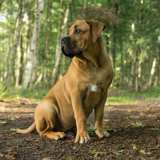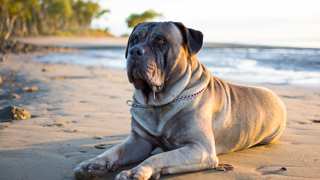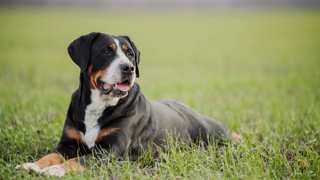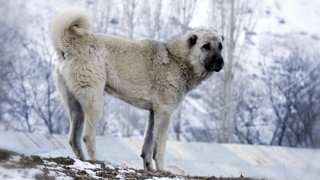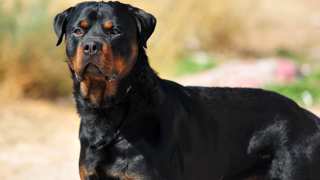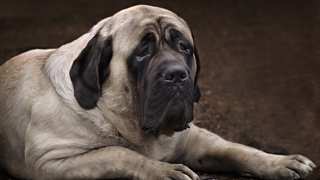As an extra-large, muscular breed, the Boerboel diet is vital to this breed's health and longevity. It almost goes without saying that Boerboel dog food will need to be high in animal proteins and carbohydrates, which both provide these dogs with much-needed energy. Though some owners choose to feed their Boerboels a diet consisting only of fresh meats, fruits and vegetables, eggs, and other fresh foods, the most common choice is premium dry food, specifically the kind made for large breeds. These high-quality foods are more expensive and can be more difficult to obtain, but they're necessary because they contain the proteins and carbs that cheap, "store-brand" foods just don't have.
It's also fairly obvious that these big, energetic dogs will eat an unbelievable amount of food. The typical adult Boerboel, depending on its age size, and activity level, will need about four cups of food per day, divided into two meals. The Boerboel puppy diet is similar, only a bit smaller: again depending on its age, a Boerboel pup will need about 2½ cups per day, divided into three meals until the pup is six months old. It's best to feed a young Boerboel large-breed puppy food until the age of 11-12 months, and then transition to an adult large-breed formula by mixing the two until the dog is used to the adult food. It's also recommended that you establish a consistent daily feeding schedule for your Boerboel so the dog gets used to eating at the same time every day. For more details on Boerboel food guidelines, see the chart below.
Dog AgeDog WeightFood TypeAmountFrequency2 Months8 lbsDry (Large-Breed Puppy formula)0.5 cups3x/day3 Months20 lbsDry0.6 cups3x/day6 Months60 lbsDry0.8 cups3x/day9 Months100 lbsDry1.5 cups2x/day12 Months125 lbsDry* (Puppy/Adult)1.75 cups2x/day18 Months+150 lbsDry (Large-Breed Adult formula)2 cups2x/day*--Around 11-12 months, transition the dog from puppy to adult food by first mixing just a bit of adult food with the puppy food. Over the course of a week, add more adult food to each meal until the dog is eating it entirely.
It's best to try to stick to the above-listed portions; though your huge Boerboel could probably eat a lot more, these portions are ample enough, and your Boerboel may become obese if over-fed. A fat Boerboel will have joint, breathing, and digestive problems, not to mention a shortened lifespan. You can control your Boerboel's weight in several ways: by having strict feeding and exercise schedules; by not feeding the dog table scraps; and most importantly, by not "free-feeding" the dog, which is leaving food in its bowl all the time so the dog can eat anytime it wants. It's highly recommended that you put your Boerboel's food bowl down only at mealtimes, then pick it up 20 minutes or so after the dog begins eating.
If you're worried your Boerboel is overweight, give the dog the Ribs Test: run a hand along its side, applying just a bit of pressure to feel below all that muscle, and if you still can't feel any ribs, the dog needs a diet. Reduce your Boerboel's daily food consumption by one-fourth, and add an extra walk/jog or play period to its daily exercise schedule.
